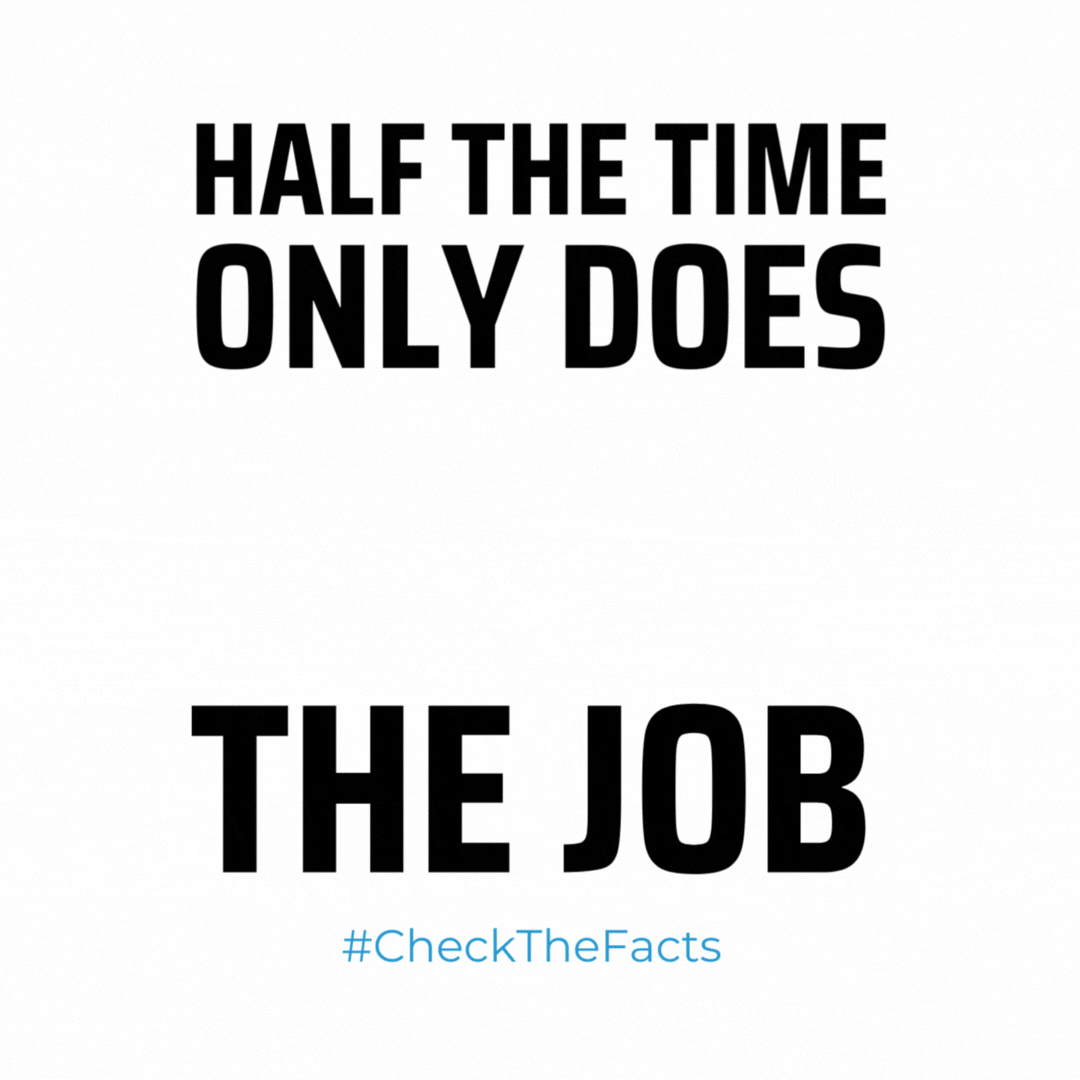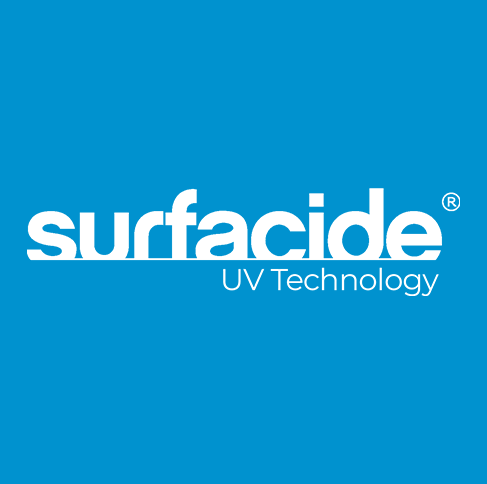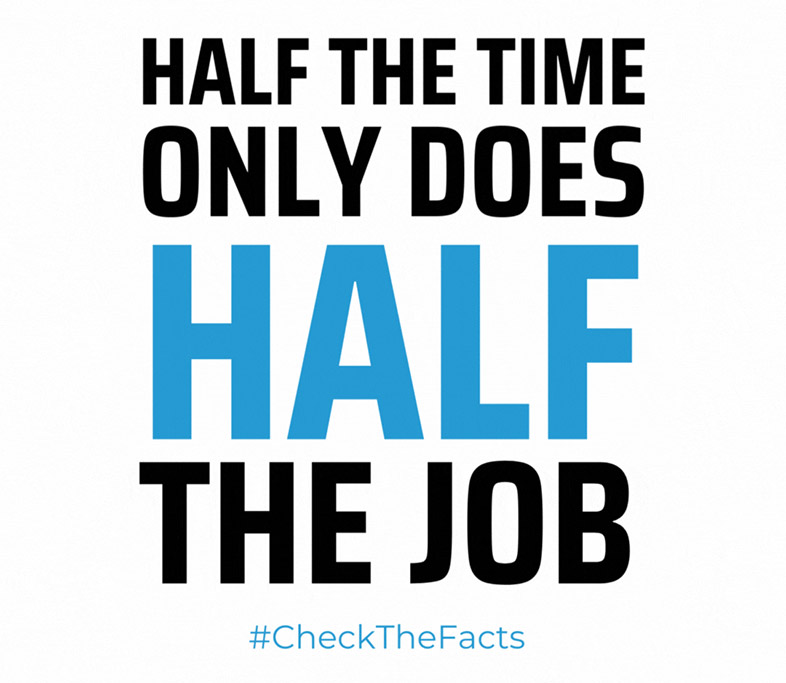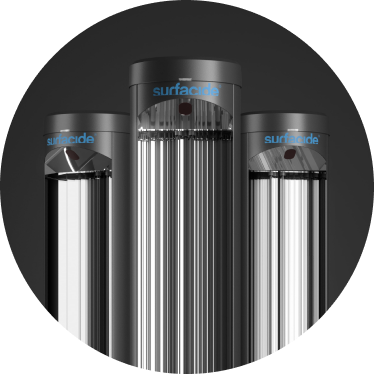Don’t Be Fooled By False Claims: Half The Time Only Does Half The Job
As we continue our #CheckTheFacts series, today we are shedding some light on the topic of disinfection cycle time and how much time is required to disinfect various environments.
Last week we discussed how UV-C technology became increasingly popular during the pandemic as a disinfection modality in healthcare and beyond. Today there are many UV-C companies that claim a single UV-C device can disinfect spaces varying from the size of a hospital room to an entire cafeteria. Science tells us otherwise.

UV-C Light Disinfection Time
Disinfection time isn’t a guessing game. It is calculated based on the size of the space, the number of objects occupying the area, and the inverse square law. This law states that every time the distance is doubled, the intensity of light energy is reduced to ¼ of the power, not simply by ½
How Can You Know If Your Space Has Been Effectively Disinfected?
Understanding the science behind UV-C technology is the first step. But how can you know if a UV-C device is thoroughly disinfecting your space? Rather than relying on UV-C companies for their time suggestions, we recommend using a third party.
Intellego Technologies produces UV-C validation products called Dosimeter Cards. These cards should be placed around the area before running a UV-C disinfection cycle on high-touch surfaces. Once the UV-C device(s) is positioned in the environment, start the disinfection cycle and the dosimeter cards will begin to change color based on how much UV-C energy they are receiving. The results are always the same – a single UV-C device is not able to change all of the dosimeter cards spread throughout the room in the time frame provided by most UV-C companies. So what is the solution?
Surfacide will be sharing more ‘Truths Behind UV-C’ so check back in each week for more information! Read last week’s Check The Facts Blog.






